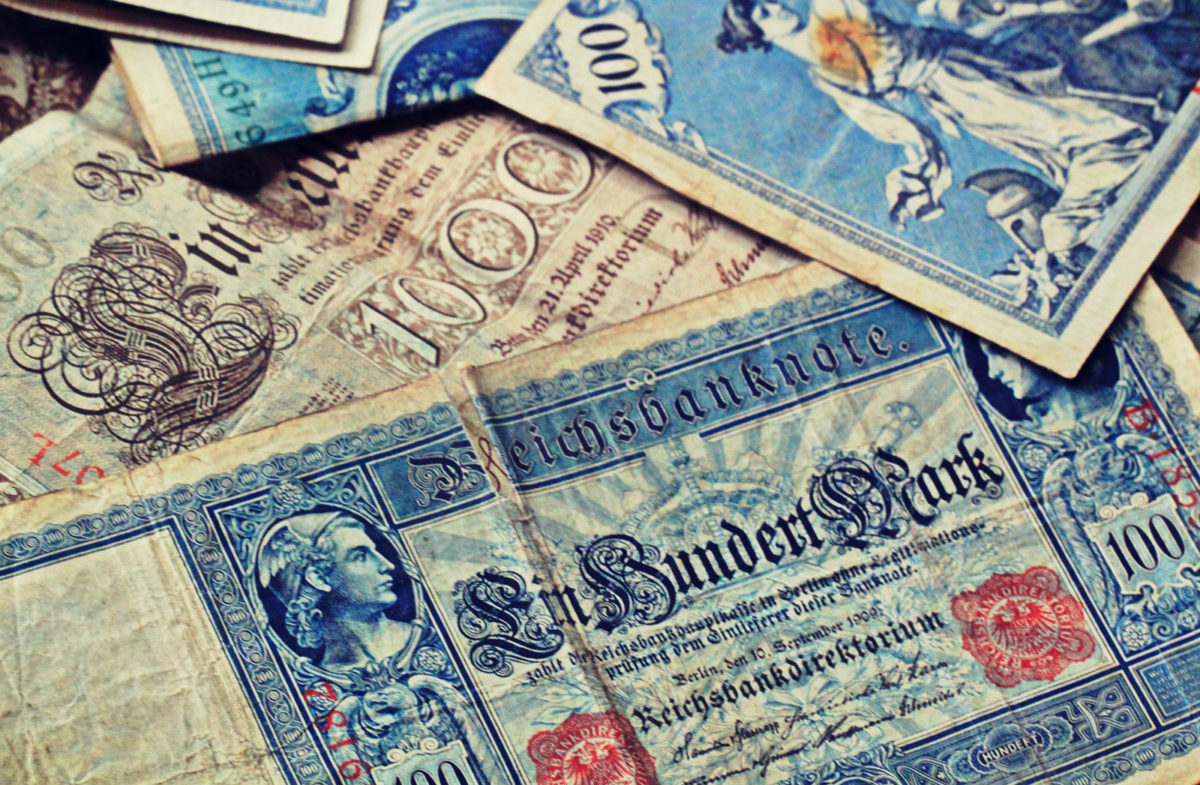Payments aren’t just about money. The payment system is an evolutionary process within the context of human history. From its beginnings in ancient times to the latest era of digitalization, it has taken several shapes and been altered to adapt to the state of technology.
Walking through the methods that we’ve used to conduct transactions in the economy can provide a variety of possibilities to gain unique insights on the payment system as it has evolved over the centuries.
Barter and Non-monetary Transactions
Bartering was common prior to the invention of coins and banknotes. People did not purchase or sell using money in ancient times.
Instead, they exchange goods or products for what they desire or need from others. Barter is the exchange of goods or services. Bartering is conducted at random and directly.
Clearly, this way of creating transactions has some major limitations. With greater levels of economic specialization, more payment methods were needed.
Metal Coins
The advancement of society necessitates the development of a more stable and efficient transaction technique. Many civilizations eventually opted to use coins, the value of which was determined by the value of the material used to make it.
Around 600 BC, the Lydians, a kingdom associated with ancient Greece and located in modern-day Turkey, issued the world’s first coins.
Because these materials are quite hard and may be used to manufacture weapons, the first coins were made of copper, then later of iron. Coins were also made from gold and silver in ancient civilizations.
Coins are incredibly convenient since they can be measured rather than weighed. Metal is a reliable and efficient form of currency. It had a significant impact on the purchasing and selling of items in the ancient world – and helped to maintain price levels.
Gold and Silver
Gold is both a precious metal and a global monetary regime. Gold has accompanied humankind throughout its history, playing an essential role in the political, economic, and social development.
Lydia is also the origin of the first gold coins.
Since then, gold coins have steadily evolved in Mediterranean civilizations and traveled across many other countries. Its unique qualities, including oxidation resistance, tarnish resistance, malleability, and ease of casting, make gold ideal for monetary purposes.
Gold, together with silver, was the basis of the monetary system for most of human history. Traditionally, Silver was generally used for internal transactions, whereas gold was used for foreign transactions.
England became the first country to establish the gold standard system in 1816, and the system underwent a lengthy transition period before being implemented in 1821.
Paper Money
Paper money’s origins are uncertain. While it originated in China during the Northern Song Dynasty, legend has it that its basic forms may be found in various regions of the world dating back to the very beginnings of human history.
Chinese paper money, or banknotes, were been in use since the Tang Dynasty in the 7th century. At that time, China’s main currency system consisted of round and square coins, as well as gold and silver coins.
Chinese banknotes were widely used across a vast area, and the country had a fairly complete banking system.
However, these banknotes are merely “checks,” and they did not entirely replace metal coins in everyday life. The notes were only disseminated among a privileged class of merchants and aristocrats due to their high value.
Due to political restraints, Chinese paper money was not able to expand beyond the Chinese mainland. The Ming dynasty implemented several efforts to restrict paper money and closed many financial establishments in 1455.
Since then, private Chinese banknotes have vanished.
Gold-Backed U.S. Dollar
After several failed attempts employing multiple exchange techniques, the United States began using gold as a basis for valuing its currency – the legendary US Dollars – in 1879, essentially returning the country to a gold standard.
From 1879 through 1933, the United States government would pay its bills in gold, issue dollars as redeemable paper money, redeem the currency to fulfill the country’s gold demands, and, most significantly, recognize paper money as legal tender.
During this time period, one ounce of gold was worth $20.67. The government issued treasury notes and national banknotes in the 1890s based on this value.
At this time national banknotes were backed by gold reserves, and were redeemable in gold or other legal tender notes. Treasury notes had legal tender status but were recalled and terminated after The Gold Standard Act of 1900, which recognized gold as the only commodity eligible for redeeming paper currency.
To meet the monetary demands of banks’ clients, the Federal Reserve notes, which could be enlarged or contracted in large quantities, were developed in 1913. It had no effect on the gold standard, however, because the US dollar was still defined in terms of gold.
President Richard Nixon stated in 1971 that the United States will abandon the gold standard, allowing the US dollar to be freely traded on global exchanges. This was a result of US spending on war in Vietnam, and had a massive impact on the global financial system.
U.S Dollar
The United States Mint issued the first dollar coins in 1792, which resembled the Spanish dollar coins made in Mexico and Peru.
The introduction of US dollar coins was marked by the Coinage Act of 1857, which resulted in the removal of the Spanish dollar, Mexican peso, and many British-originated currencies from the circulation of legal currency in the country.
Following the demands to fund the Civil War, the first batch of US dollar notes was issued in 1861. Later, in 1862, the United States government issued United States notes (known as legal tender), and in 1869, it established a standardized printing system for the notes.
The United States dollar was acknowledged as the world currency beginning in 1944. It would go on to become the world’s most dominating currency, which it still is today.
The current printed notes are $1, $2, $5, $10, $20, $50, and $100, after the production and printing of notes greater than $100 was formally halted in 1969. Except for the $1 and the newly-published $100 bill, the Bureau of Engraving and Printing planned to redesign each dollar after 2004.
A number of coins were also created, with the most common and widely used being one cent, five cents, ten cents, twenty cents, and fifty cents.
Credit Cards
Lewis Mandell writes in “Credit Card Industry: A History” that the notion of a credit card sprang from agrarian life where farmers had to find a means to defer payment of seeds, animals and supplies during planting season and pay later. This was the start of the history that would shape today’s credit cards.
Cuneiform was used to record transactions on clay tablets 5,000 years ago. Notably, debtors could be prevented by erasing counts and records.
Credit coins emerged after the US Civil War. The aim was to stamp an image and a customer account number on the coins. After a coin’s owner purchased a product, a merchant would evaluate the credit limit and authorize or deny it based on the account number’s paper file.
In 1914, Western Union launched metal cards dubbed “metal money” as an early version of the credit card.
When a banker called John Biggins debuted “Charg-It” cards (the first and closest form of a modern credit card) in 1946, they only worked with local establishments within a two-block radius.
Forrest Parry, an IBM engineer, invented the magnetic stripe in the 1960s. This cutting-edge technology is used in today’s credit cards from VISA, Mastercard, etc. Today, people use credit and debit cards instead of cash. This trend is set to grow, but not without some challenges.
Mobile Payments
In 1997, Coca-Cola introduced an SMS vending machine in Helsinki, Finland. Around the same time, Mobil introduced Speedpass, a device that allowed customers to pay for gas by placing it near or on a sensor on the pump.
But the two SMS-based mobile payment systems had a limitation: they could only accept tiny amounts (known as micropayments). In 1997, Finland’s Merita bank launched the world’s first phone-based banking service.
Since then, mobile payment systems have been steadily developing. By 1999 and 2001, people would be able to buy movie tickets and pizzas using their cell phones. A major mobile payment system from Vodafone was launched in 2007.
Customers could make micro and macro payments using USSD/SMS.
Of course, with easier ways to pay came more fraud. Companies like Securter are creating tools that will make digital payments easier, and protect the legacy credit card system, which still has a lot of utility.
It is expected that as technology advances and new ways by financial institutions and fintech companies emerge, the power and promise of mobile payments will be unlocked on a larger scale.
References:
https://squareup.com/us/en/townsquare/history-of-money-and-payments








